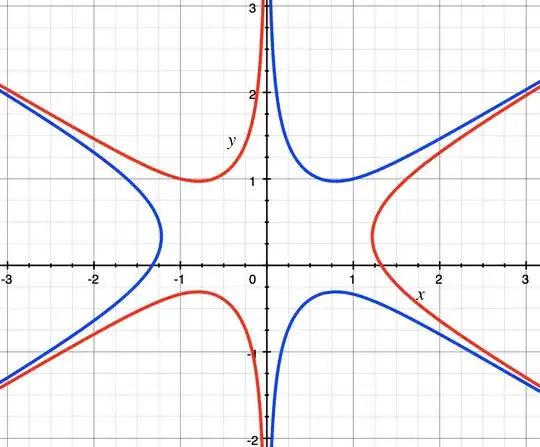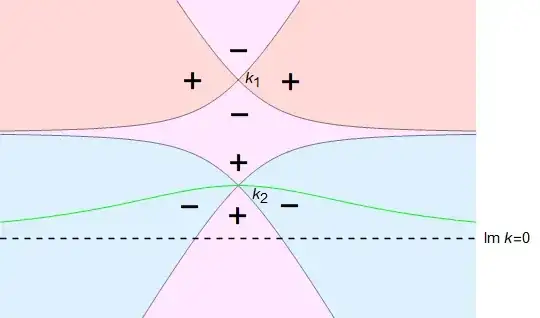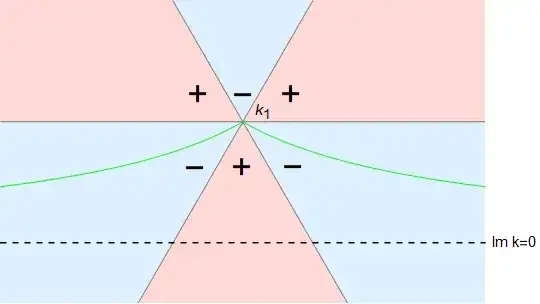I answered a question a while ago on solving a PDE, and ended up with the solution in terms of an inverse Fourier transform but left it at that.
I'm curious to try and approximate it now, using the method of steepest descent. The integral is explicitly given by,
$$\int_{-\infty}^\infty \frac{\mathrm dk}{2\pi} \,\underbrace{e^{ixk}}_{f(k)} \, \exp \underbrace{\left[t \left( ik-ak^2-ibk^3\right)\right]}_{t\phi(k)}$$
for $t\geq 0$ and $a,b \neq 0$. I would be interested in the behaviour as $t\to\infty$. As I understand it, the method of steepest descents is considering the integral over contours of constant $\mathrm{Im} \, \phi(k)$, and applying Watson's lemma (or the Laplace method for just the first term in the asymptotic expansion).
If we take $k = x+iy$, then $\mathrm{Im}\, \phi(k) = x - bx^3-2axy + 3bxy^2 $ which we desire to be constant. I have a plot of these contours for $a = b = 1$ and $\phi = 1$ (blue) as well as $\phi = -1$ (red):
Changing the sign of $b$ gives completely different contours, so I'll settle for thinking of $b > 0$ for now. Now, the integrand has no poles, so the integral over any Jordan curve must vanish. However, if I am to apply this to compute the integrals over all the contours, I still have the problem that I cannot use these to form a closed curve; they only seem to 'meet' at infinity and asymptote some line. How would one go about applying steepest descents in this case?
In addition, one of the contours must be along $(-\infty, \infty)$ on the real axis, but it seems I can only 'join' with the contours at two finite points. However, in the limit $c \to \infty$ for $\mathrm{Im} \, \phi = -c$, there is a contour, since the left and right contours spread out.
Any other approaches to the integral other than steepest descents is of course also appreciated.



